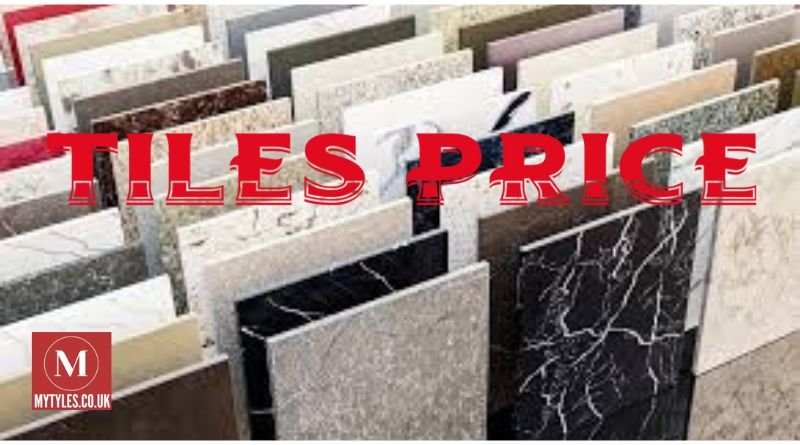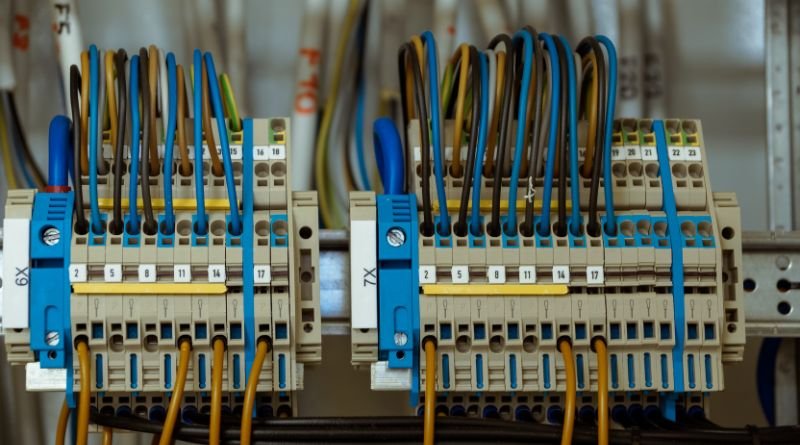Tiles are a popular choice for flooring and wall coverings, offering a durable, versatile, and aesthetically pleasing option for homes and commercial spaces alike. Whether you’re embarking on a home renovation, constructing a new property, or simply looking to upgrade your interior, understanding the factors that influence tiles price is crucial. In this article, we’ll dive deep into the key factors that affect tile prices, types of tiles available, and tips for choosing the best option to suit your needs and budget.
Factors That Influence Tile Prices
When it comes to determining the price of tiles, several key factors come into play. It’s not just about the tile itself; the cost is impacted by multiple elements including the material, size, brand, and additional expenses such as installation and transportation.
1. Material
Tiles are made from a variety of materials, and the cost can vary significantly depending on the type you choose. The most common materials used for tiles include:
- Ceramic: Ceramic tiles are often the most affordable option. They are made from clay and other natural materials that are fired at high temperatures. Ceramic tiles are widely available, easy to install, and come in a variety of designs and finishes. Prices for ceramic tiles generally range from $1 to $5 per square foot.
- Porcelain: Porcelain tiles are a type of ceramic tile, but they are denser, less porous, and more durable, making them a great choice for high-traffic areas or outdoor spaces. The added durability and aesthetic appeal come at a higher cost, with porcelain tiles typically ranging from $3 to $10 per square foot.
- Natural Stone: If you’re looking for a luxurious, high-end option, natural stone tiles such as marble, granite, slate, or travertine are excellent choices. However, they tend to be more expensive, with prices ranging from $5 to $30 or more per square foot, depending on the stone type and quality.
- Glass: Glass tiles are often used for decorative purposes, such as backsplashes or accent walls. They can add a sleek, modern look to any space. Glass tiles typically cost between $7 and $30 per square foot.
- Metal and Cement: While less common, metal and cement tiles can be used for specialized designs and are typically more expensive, with prices ranging from $10 to $50 or more per square foot depending on the style and quality.
2. Tile Size
Another significant factor that impacts tiles price is the size of the tile. Larger tiles often cover more surface area, which can reduce the number of tiles you need to buy. However, larger tiles may also be more expensive per piece. For example, 12×12-inch tiles might cost less per square foot than larger 24×24-inch tiles. Generally, smaller tiles are cheaper, but the installation cost for smaller tiles can be higher due to the increased number of tiles required.
3. Design and Finish
The design and finish of the tile can also influence the price. Tiles that have intricate designs, high-quality finishes, or special effects like metallic or textured finishes are typically more expensive. Custom-designed tiles are at the higher end of the price spectrum. Additionally, polished or glazed tiles tend to be more expensive than matte finishes because of the additional production processes involved.
4. Brand
The brand you choose can significantly affect the cost of your tiles. Well-known brands often command higher prices due to their reputation for quality and durability. On the other hand, lesser-known brands might offer more affordable options but could compromise on quality. It’s essential to strike a balance between price and quality to ensure you get the best value for your money.
5. Location and Transportation
The location where you purchase your tiles can also impact the price. Tiles imported from abroad can be more expensive due to shipping costs, while locally sourced tiles might offer more affordable pricing. Additionally, the cost of transportation from the store to your home can add to the total cost, especially for heavy materials like tiles.
Types of Tiles and Their Price Ranges
Understanding the different types of tiles available on the market is crucial to making an informed decision. Each type of tile offers unique benefits, aesthetics, and price points. Here’s a closer look at some of the most common types of tiles and their typical price ranges:
1. Ceramic Tiles
Ceramic tiles are one of the most affordable and versatile options available. They are widely used for both floors and walls in residential and commercial spaces. Ceramic tiles are known for their durability, ease of installation, and a wide range of design options. As mentioned earlier, ceramic tiles usually cost between $1 and $5 per square foot. The price can vary depending on factors like design, size, and finish.
2. Porcelain Tiles
Porcelain tiles are more durable and water-resistant than ceramic tiles, making them suitable for high-moisture areas such as bathrooms and kitchens. Porcelain tiles are also available in various designs, including those that mimic the look of natural stone or wood. The price for porcelain tiles typically ranges from $3 to $10 per square foot, depending on the design, size, and finish.
3. Natural Stone Tiles
Natural stone tiles, such as marble, granite, slate, and travertine, are known for their luxurious and unique appearance. Each piece of natural stone is one-of-a-kind, adding a distinctive aesthetic to any space. However, natural stone tiles require more maintenance and are generally more expensive. The price range for natural stone tiles varies widely depending on the type of stone, with prices ranging from $5 to $30 or more per square foot.
4. Glass Tiles
Glass tiles are often used for backsplashes and decorative accents. They come in various colors and finishes, allowing for creative design possibilities. However, glass tiles can be more expensive, typically ranging from $7 to $30 per square foot.
5. Cement Tiles
Cement tiles are known for their bold designs and patterns, making them a popular choice for accent walls and floors in modern homes. Cement tiles are durable but require regular sealing to maintain their appearance. Prices for cement tiles range from $10 to $50 per square foot, depending on the complexity of the design.
Additional Costs to Consider
In addition to the price of the tiles themselves, there are several other costs to consider when budgeting for your tile project.
1. Installation Costs
The cost of installing tiles can vary depending on the complexity of the project and the experience of the installer. For basic installations, labor costs can range from $4 to $10 per square foot. However, for more intricate designs or complex layouts, such as mosaic or diagonal patterns, the installation cost may be higher.
2. Grout and Adhesives
Grout and adhesives are essential for any tile installation. Depending on the type of grout you choose, the cost can range from $0.50 to $2 per square foot. Specialized grout, such as epoxy grout, is more expensive than standard grout. Similarly, the type of adhesive used can affect the overall cost, with prices ranging from $1 to $3 per square foot.
3. Subfloor Preparation
If the subfloor is uneven or damaged, additional work may be required to prepare the surface for tile installation. This can include leveling the floor, repairing cracks, or adding an underlayment. The cost of subfloor preparation can vary widely depending on the condition of the existing floor and the materials used.
Tips for Saving on Tile Costs
While tiles can be a significant investment, there are several ways to save on costs without sacrificing quality or design.
1. Buy in Bulk
Many retailers offer discounts when you purchase tiles in bulk. If you’re tiling a large area, buying in bulk can save you a significant amount of money.
2. Look for Sales and Discounts
Keep an eye out for sales, promotions, and clearance events at tile retailers. You can often find high-quality tiles at discounted prices during these events.
3. Choose Standard Sizes
Custom or oversized tiles tend to be more expensive than standard sizes. Opting for standard-sized tiles can help reduce costs without compromising on style.
4. DIY Installation
If you’re comfortable with basic home improvement tasks, consider installing the tiles yourself to save on labor costs. However, keep in mind that improper installation can lead to costly repairs down the line, so it’s essential to do your research and ensure you’re up for the task.
Conclusion
Understanding tiles price is essential for making informed decisions when planning your tiling project. From the material and size to the brand and location, numerous factors influence the cost of tiles. By considering all these elements and being mindful of additional expenses such as installation and transportation, you can find the perfect tiles that fit both your design vision and your budget. Whether you choose ceramic, porcelain, natural stone, or glass tiles, knowing what to expect in terms of price will help ensure a successful and cost-effective project.
By taking the time to research and plan, you can create a stunning and durable space without breaking the bank.
Read also: check




